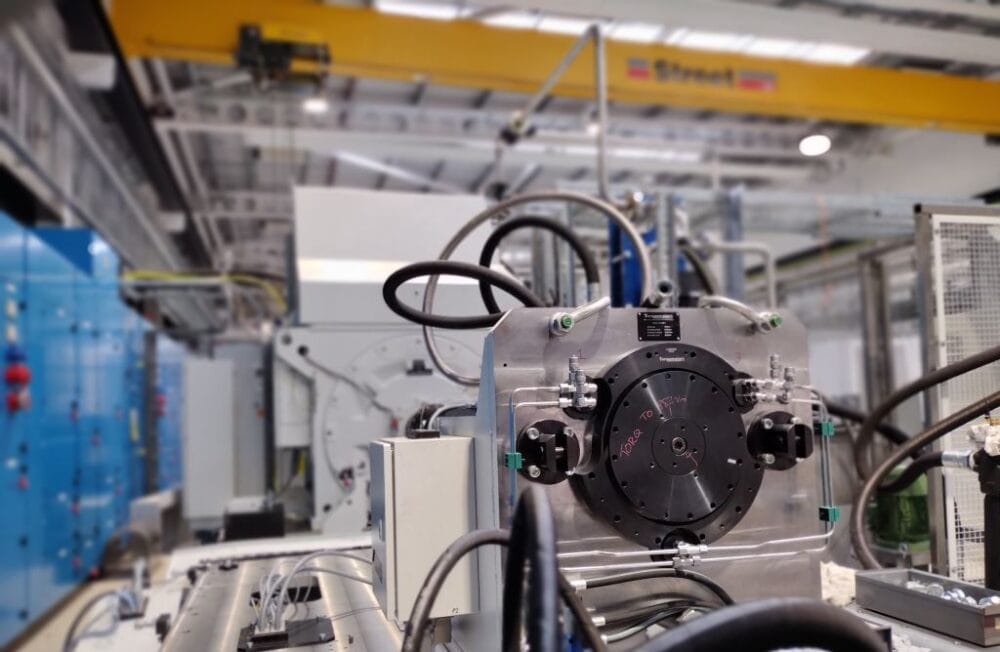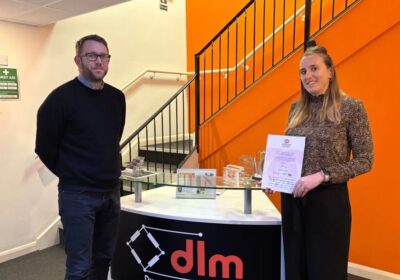A 2 MW dynamometer test stand, designed and installed by turbomachinery test rig specialists Torquemeters using an ABB motor and drive system, will support extensive development programmes for the electrification of aircraft and other transport at the University of Nottingham.
A major new project at the University of Nottingham has seen the installation of an advanced dynamometer test rig at its world renowned propulsion testing facility. The 2 MW dynamometer, which is an electro-mechanical system with four-quadrant power conversion capability and able to dynamically emulate thrust loads, will help open up exciting new possibilities for the future of clean and electrified aviation propulsion systems.
The testing facility is a new addition to the University of Nottingham’s Power Electronics and Machine Centre (PEMC), which is also the home of the Midlands Driving the Electric Revolution Industrialisation Centre (DER-IC). The facility will complement existing MW-class electrical machines and drives design and manufacturing capabilities to enable the whole development cycle of future aircraft propulsion systems under one roof.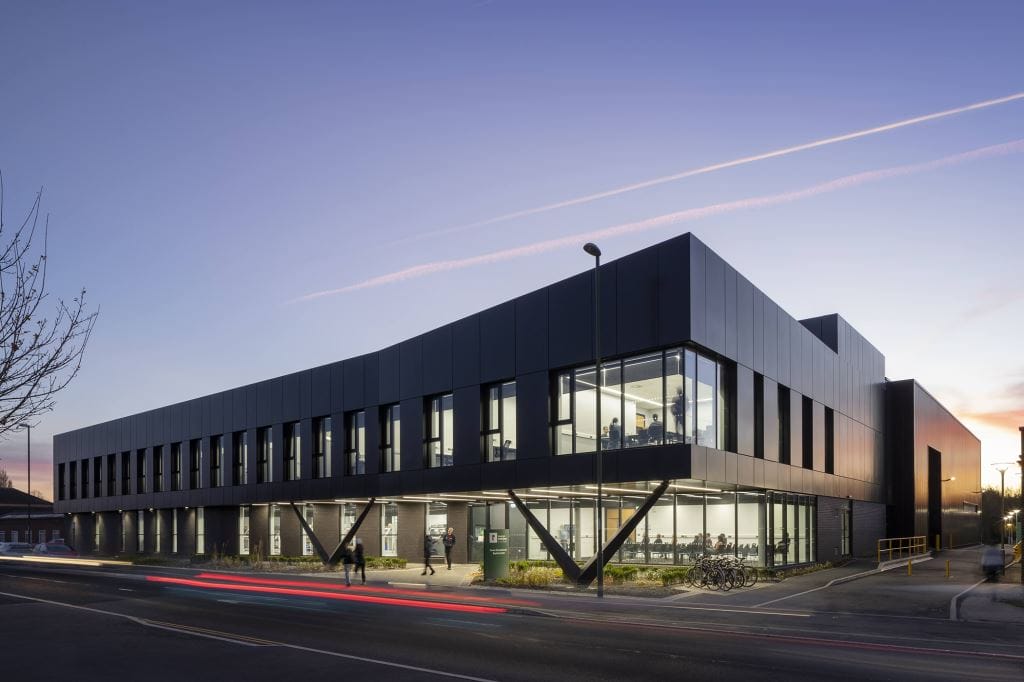
Using its advanced research facilities, the world-class team at Nottingham aims to develop and test green and sustainable new propulsion systems for all forms of transport, ultimately reducing the sector’s destructive impact on the environment
Transport is responsible for almost a quarter of global CO2 emissions. Using its advanced research facilities, the world-class team at Nottingham aims to develop and test green and sustainable new propulsion systems for all forms of transport, reducing the sector’s destructive impact on the environment, while benefiting societies across the world. Research is primarily focused on hybrid and electric demonstrators for air, land and marine transport.
The dynamometer is designed to enable testing and validation of MW- and kV-class electrical drive systems for both low-speed to high-speed (800-30,000rpm) e-motors and generators for hybrid electric propulsion systems. The system can dynamically emulate mechanical loads seen from propellors, gas turbine generators, or any other mechanical transmission. Concurrent torque and thrust can be applied to simulate, for instance, load on a propeller in flight, or the system can be set up to test the output and performance of an engine in representative conditions.
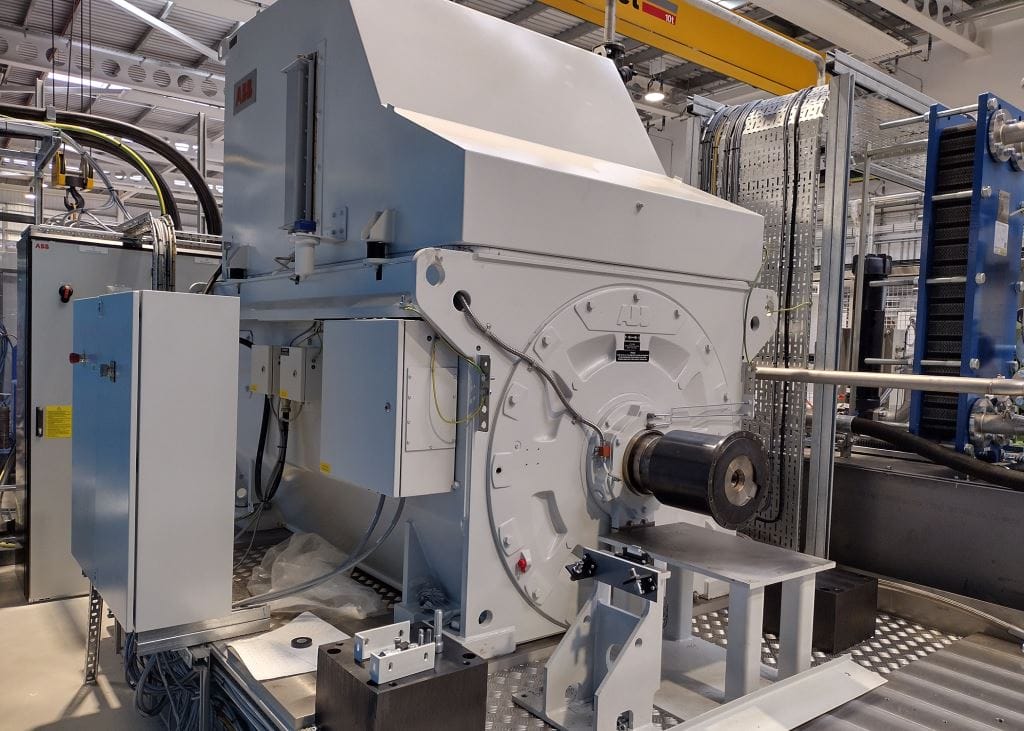
A major new project at the University of Nottingham has seen the installation of an advanced dynamometer test rig at its propulsion testing facility used for the development and testing of electric propulsion systems
Torquemeters, a specialist engineering company based in Northampton, designed, manufactured, installed and commissioned the system, which is comprised of an ABB drive and motor, a multiple-output parallel-shaft gearbox, lubrication system, a proprietary in-line phase-shift Torquemeter, high-speed low-mass couplings, and a rig health monitoring system. The system is complemented with a unique controllable and re-configurable power supply system which can emulate different energy sources including batteries, fuel-cells and APUs.
The ABB drive and motor package solution utilises the company’s advanced ACS880 platform in a liquid-cooled, low voltage, industrial multi-drive converter format. The converter features an Active Front End (AFE) fully regenerative rectifier, while the drive also includes a separate DC connection cabinet. The cabinet layout was specially designed in an L-shape to fit within the test bay space, and accommodate the liquid-cooling unit. The motor was an ABB Optimum Performance modular 2MW 0-75Hz AMI type 560mm frame water-cooled design that was specifically optimised for ACS880 operation. The motor was also designed to operate as a generator.
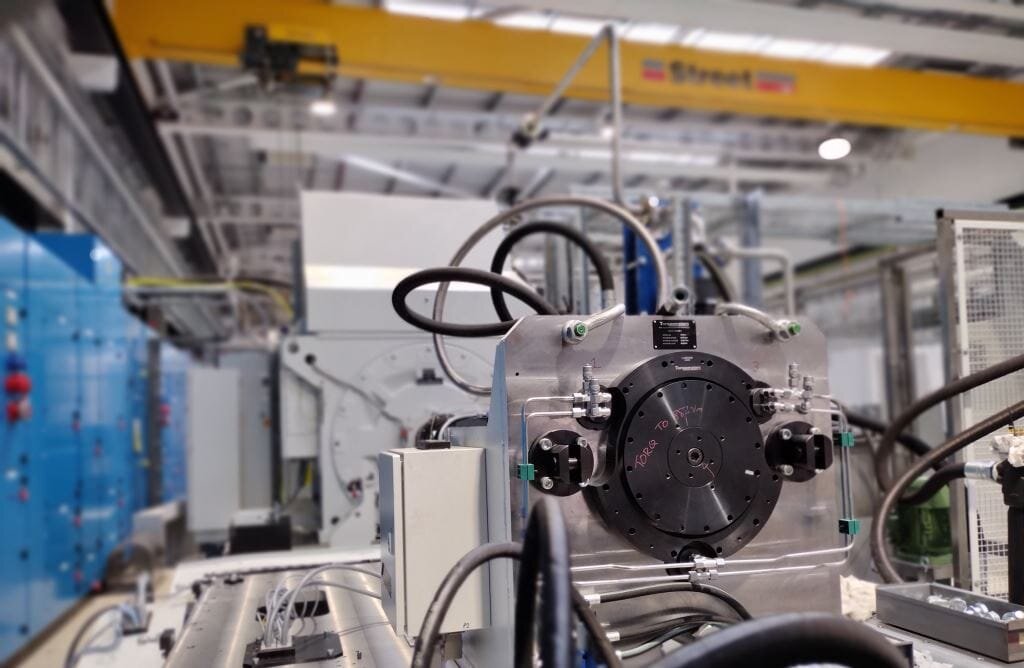
The 2 MW dynamometer is an electro-mechanical system with four-quadrant power conversion capability, and is used to dynamically emulate thrust loads
One of the major challenges in designing and building such a system is managing heat dissipation. Traditionally, similar facilities have been built near large bodies of water such as lakes or reservoirs, drawing vast amounts of water in for cooling, while also requiring complex infrastructure to cool the heated water in a closed system. In contrast, Torquemeters’ system uses a regenerative ABB drive, which can absorb excess power and then recirculate it, vastly improving efficiency compared to traditional testing rigs. This significantly lowers the amount of cooling infrastructure required, which in turn reduced the amount of investment required to bring the project to life.
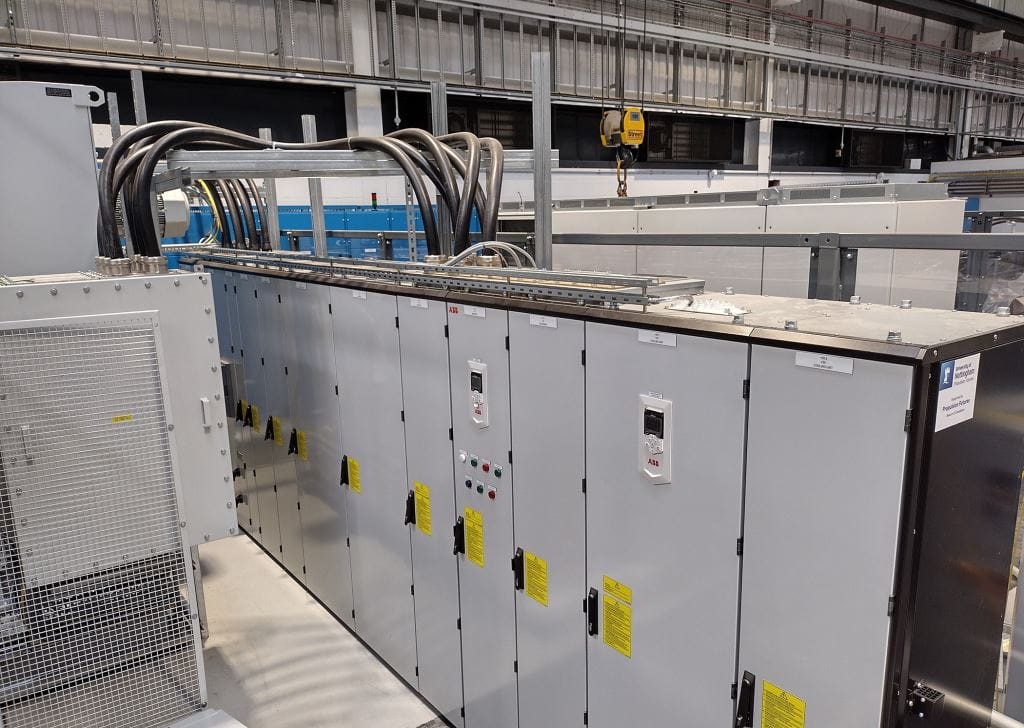
The test rig, which incorporates an ABB drive and motor package solution, utilises ABB’s ACS880 platform in a liquid-cooled, low voltage, industrial multi-drive converter format
Torquemeters’ Geoff Robinson explains: “One of the big advantages of a regenerative system is that once started they’re very efficient at recirculating power – you only have to put in the energy you need to make up the system losses. With the 2 MW project we were able to take advantage of this functionality to keep energy wastage to a minimum.”
The project was the largest test rig of its kind that Torquemeters had ever built, and thus required a motor and drive of a larger size and rated power than they had previously used. ABB’s solution was chosen in particular for its excellent performance and functionality in larger applications. The regenerative functionality of the drive, and the ability to package both the motor and drive together as a matched pair, were also major benefits.
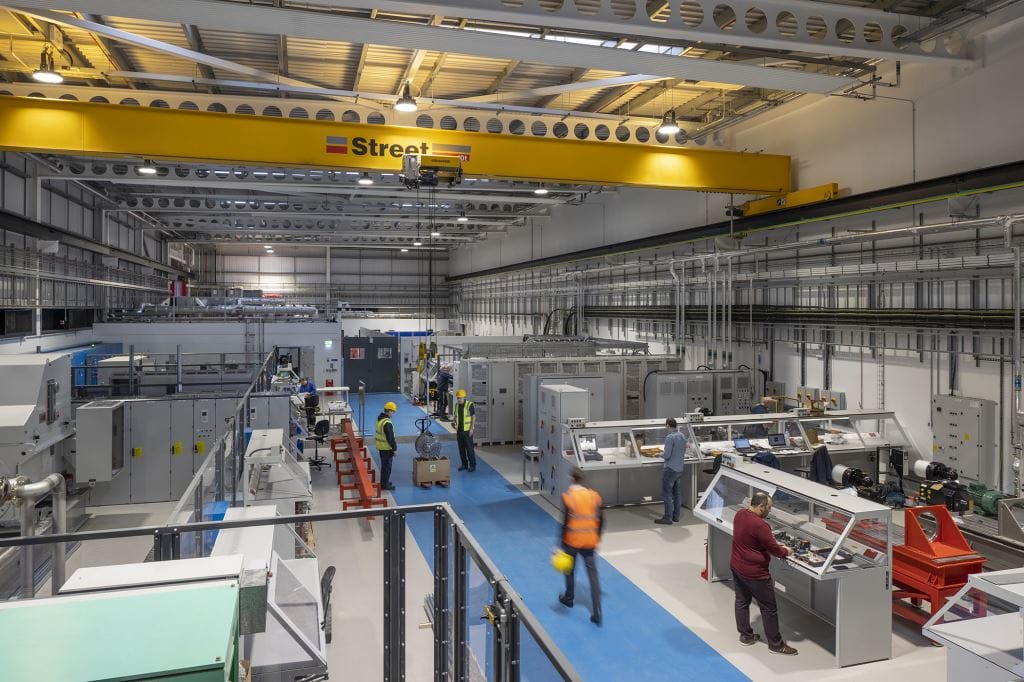
The new test rig is an important step on the path to making the UK an international leader in the development of high-power aerospace electrical systems
“This was the largest test rig we’ve delivered in our 70-year history, and ABB is one of the best regarded suppliers globally for this type of application,” continues Robinson, “They also had the best solution in terms of product functionality and provided a packaged system – normally we would have to purchase the motor and drive separately and package them ourselves. This was the first time we’ve used ABB, and we were extremely impressed with their project execution and product performance, particularly given the high performance rating of the system.”
The new test rig is an important step on the path to making the UK an international leader in the development of high-power aerospace electrical systems, adds Chris Varley, Facility Manager: “The rig has four gearing stages and so covers a huge testing envelope for power, speed and torque. Previously our highest power test stand was 800 kW, so the 2 MW rig more than doubles our power capabilities, and allows us to test more representative loads. Research in this area can be a slow process, but with the enhanced capabilities that the new rig brings we aim to accelerate the pace of change. Our aim is to be able to offer all the testing needed for qualifying electrical systems for flight.”
“We hope that our work here can help to pave the way for a revolution in greener transport,” continues Varley, “The PEMC sits at the centre of the future of propulsion, and we expect the University of Nottingham to be a key player in developing innovative electrification solutions for the transportation of tomorrow.”

